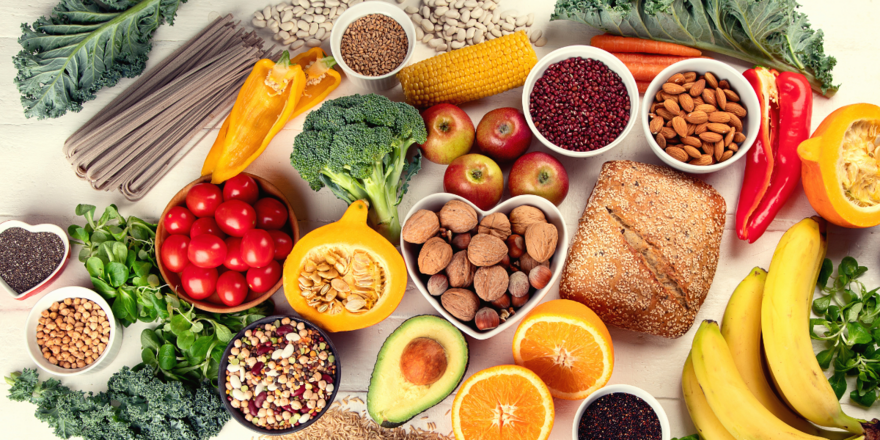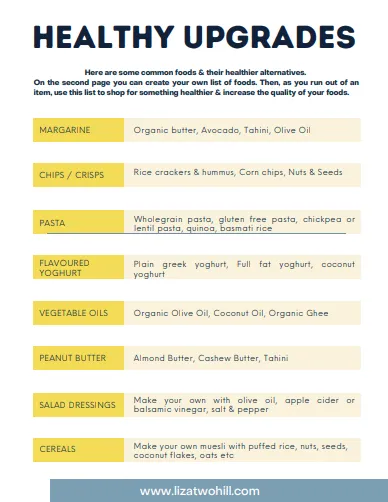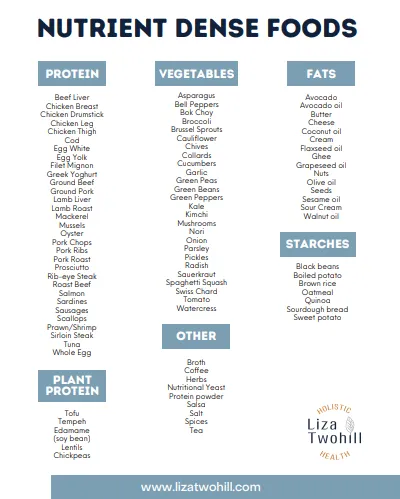Wholefoods - Where to Begin

Hello, and welcome to the world of wholefood nutrition! I'm Liza Twohill, and I'm excited to guide you on your journey to understanding the basic principles of wholefood nutrition. Whether you're just starting or looking to refine your eating habits, this blog post will provide you with essential insights to get you started on the path to better health through wholefood nutrition.
A Bit About Me:
Before we dive into the principles of wholefood nutrition, let me introduce myself. I'm a qualified naturopath with over two decades of experience. My expertise lies in addressing issues such as fatigue, burnout, and the fascinating connection between gut health and brain function. I firmly believe that making informed food choices and adopting a balanced lifestyle can significantly impact our overall well-being. My focus is to bring practical real life health solutions.
Growing up I was fortunate to live on a farm where we grew most of our food and adopted a balanced wholefood eating style. Don’t get me wrong, we had our share of processed foods too along the way. However, the fundamental principles around wholefoods have always been there for me and if you are either starting out or wanting to refine what you are doing my message to you is to not over complicate thing or go too hard. It is about being kind to yourself and doing what is achievable in your life right now.
Now, let's explore the fundamental principles of wholefood nutrition:
1. Healthy Upgrades:
Your journey to better nutrition starts with making positive changes in your food choices. It's essential to assess what you're currently eating and consider healthier alternatives. The typical processed foods are the ones we all should know, they are basically in else of the supermarket in package. These choices contribute to chronic diseases like heart disease, diabetes, and more. Our goal is to transition toward a whole food, plant-based eating style. Begin by identifying unhealthy items in your diet and seek healthier substitutes. Maintain a food diary to track your choices and potential upgrades. There is no judgement here, it is about looking at what your current choices are and what you could possibly upgrade to. Here are some examples to get you started.

2. Eating Whole Foods:
Whole foods are the cornerstone of a nutritious diet. These are foods in their natural state, unprocessed and brimming with essential micronutrients. Think fruits, vegetables, whole grains, nuts, seeds, and more. Unlike processed foods, whole foods offer an abundance of micronutrients that support your overall health. Start by assessing your current intake through a food diary and look for opportunities to incorporate more whole foods into your meals. Remember, variety is key!
3. Stay Hydrated:
Proper hydration is often overlooked but is crucial for your overall well-being. Don't limit your idea of hydration to just water; whole foods, smoothies, herbal teas, and even water infused with lemon or lime can contribute to your hydration. Be mindful of the containers you drink from, opting for safer options rather than plastics. To gauge your hydration levels, monitor your urine colour, thirst levels, and aim to start your day with a glass or two of water upon waking.
4. Nutrient-Dense Foods:
Nutrient density is a concept that focuses on foods rich in essential micronutrients without an excess of energy (calories). Whole foods like dark leafy greens, organ meats, eggs, and certain seafood are prime examples of nutrient-dense choices. Prioritizing nutrient-dense foods provides your body with the essential vitamins and minerals it needs. The closer to nature the food is the more likely it is nutrient dense.

5. Eating Window:
Pay attention to when you eat. Our bodies operate on a circadian rhythm, and our meal timing can influence our health, particularly our energy, brain, and mood. Aim for a consistent eating window, ideally around 10-12 hours, to support your body's natural rhythms. Start by observing your current eating patterns and gradually work towards a balanced eating window.
6. Protein, Fats, and Plants:
These three components form the foundation of your diet. Focus on incorporating quality proteins (from sources like meat, fish, eggs, legumes, nuts, and seeds), healthy fats (found in avocados, olive oil, and fatty fish), and a variety of plant-based foods (fruits, veggies, and grains) into your meals. A well-rounded plate consists of these elements in appropriate proportions. My advice is to try your best to include these three components on your plate with at least two meals a day.

7. Ditch Deprivation and Perfection:
Avoid the trap of perfectionism and deprivation. It's not about achieving a flawless diet; it's about making sustainable, positive changes. Balance and consistency is key, so don't beat yourself up for occasional indulgences. Strive for progress, not perfection.
I hope this blog has given you a clear framework to focus on. By embracing these principles, it will set you on the path to better health and well-being through wholefood nutrition. Remember, this journey is not a sprint. Take your time, reflect on your choices, and make gradual changes that work for you.
If you would like to learn more feel free to check out my online Eat Well Thrive Well program here. Otherwise, you can find out more about me and how I may best support you here.


0 comments
Leave a comment
Please log in or register to post a comment